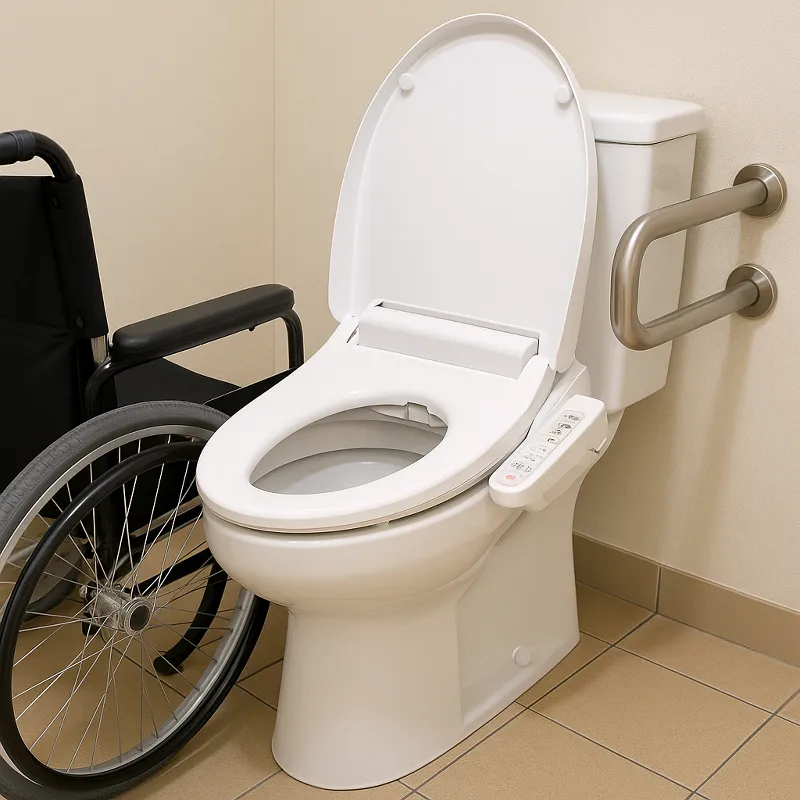
Introduction to Bidet Options
For wheelchair users, maintaining hygiene can present unique challenges. Traditional toilet setups might not always be the most accessible or comfortable option. Fortunately, bidets offer a viable solution, providing independence and improved personal hygiene. With various bidet options available, it’s essential to understand which features and designs can best accommodate wheelchair users. In this guide, we will delve into the different types of bidets, their specific benefits, and considerations to keep in mind when selecting the perfect bidet for a wheelchair user.
Considerations for Bidet Installation in Bathroom Remodels 👆Types of Bidets
Bidets come in various styles and functionalities, each offering distinct advantages. Primarily, they can be categorized into standalone bidets, bidet attachments, and electric bidet seats. Each type has its own set of features, installation requirements, and suitability for wheelchair users. Understanding these differences is crucial for making an informed decision.
Standalone Bidets
A standalone bidet is an independent fixture that resembles a toilet but is used specifically for washing the genital and anal areas. These bidets require the user to transfer from the toilet to the bidet, which can be challenging for wheelchair users who lack mobility or strength. However, they provide a thorough cleaning experience and can be a good option in bathrooms with ample space for easy transfers and maneuverability.
Bidet Attachments
Bidet attachments are devices that can be installed onto existing toilets, making them a convenient and cost-effective option. They feature a nozzle that sprays water for cleaning purposes. For wheelchair users, bidet attachments eliminate the need for transfers, as they can be used directly on the toilet. However, it’s crucial to ensure that the attachment is accessible and the controls are easy to reach and operate.
Electric Bidet Seats
Electric bidet seats replace the existing toilet seat and offer various functionalities, including adjustable water pressure, temperature controls, and air drying. These seats provide a luxurious and comprehensive cleaning experience. For wheelchair users, electric bidet seats are highly beneficial as they offer hands-free operation with remote controls or buttons, reducing the need for physical manipulation. They also often include features like heated seats and night lights, enhancing comfort and usability.
Design Trends for Bidets for Those with Mobility Challenges 👆Benefits for Wheelchair Users
Using a bidet can significantly enhance the quality of life for wheelchair users. Firstly, it promotes independence by reducing the need for assistance during personal hygiene routines. This independence is empowering and contributes to improved self-esteem and privacy. Secondly, bidets provide a more thorough cleaning compared to toilet paper, which can prevent skin irritation and infections. Additionally, the use of water is gentler on sensitive skin, reducing the risk of abrasions or discomfort.
Health and Comfort
For individuals with mobility challenges, maintaining hygiene can be complicated and uncomfortable. Bidets offer a solution that enhances both health and comfort. The gentle stream of water reduces the need for reaching or twisting, minimizing the physical strain associated with traditional methods of cleaning. This is particularly beneficial for those with limited upper body strength or flexibility.
Environmental Impact
Bidets also present environmental benefits by reducing the reliance on toilet paper. For wheelchair users, this is an added advantage, as less toilet paper usage translates to fewer items to manage and dispose of, simplifying the bathroom routine. By conserving trees and water used in the production and disposal of toilet paper, bidets contribute positively to environmental sustainability.
Essential Bidet Features for the Elderly 👆Installation Considerations
When installing a bidet for a wheelchair user, several factors need to be considered to ensure safety, accessibility, and comfort. These include bathroom layout, plumbing requirements, and the user’s specific needs.
Bathroom Layout
The layout of the bathroom plays a vital role in determining the feasibility of certain bidet types. For instance, standalone bidets require more space for transfers, while bidet attachments and electric bidet seats utilize existing toilet space. It’s important to have enough clearance for the wheelchair to move freely and for the user to transfer safely.
Plumbing Requirements
Some bidets, particularly standalone models, may require additional plumbing work, which can be costly and time-consuming. Bidet attachments and electric seats usually require minimal plumbing adjustments, making them easier to install. Assessing the existing plumbing setup will help determine the most suitable bidet option and streamline the installation process.
User Needs and Preferences
Understanding the specific needs and preferences of the wheelchair user is crucial. Some may prefer the simplicity and affordability of a bidet attachment, while others might value the advanced features of an electric bidet seat. Considerations such as ease of use, control accessibility, and personal comfort should guide the selection process.
Improvement in Vulvar Health by Using Bidet Instead of Toilet Paper 👆Conclusion
Choosing the right bidet option for a wheelchair user involves assessing various factors, including the type of bidet, installation requirements, and the user’s personal needs. By focusing on these aspects, wheelchair users can find a bidet solution that enhances their independence, hygiene, and quality of life. As bidet technology continues to evolve, the options for accessible and user-friendly designs are expanding, making it easier than ever to find the perfect fit. Whether opting for a simple attachment or a feature-rich electric seat, the benefits of incorporating a bidet into daily routines are clear, providing a path to improved comfort and dignity in personal hygiene.
Related Post: Essential Bidet Features for the Elderly
How to Use a Bidet to Prevent Anal Microtrauma 👆